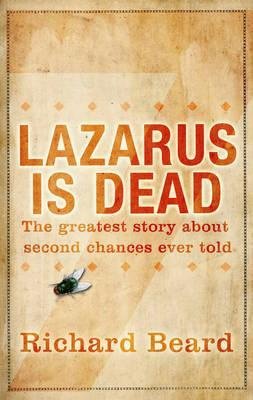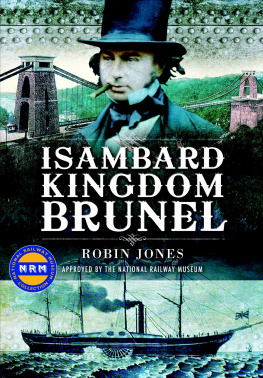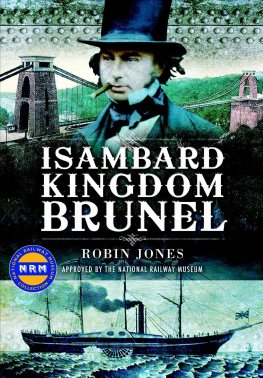PENGUIN BOOKS
The Secrets of the Lazarus Club
Dr Tony Pollard is an internationally renowned archaeologist and Director of the Centre for Battlefield Archaeology at Glasgow University. He has carried out pioneering investigations of battlefields in South and North Africa, South America and Europe, and as a Forensic Archaeologist has worked with police forces throughout Britain.
He has written numerous papers and articles on archaeology and history and is co-editor of the Journal of Conflict Archaeology. He was the co-presenter of two series of BBC2s archaeological documentary Two Men in a Trench.
The Secrets of the Lazarus Club is his first novel.
The Secrets of the
Lazarus Club
TONY POLLARD

PENGUIN BOOKS
PENGUIN BOOKS
Published by the Penguin Group
Penguin Books Ltd, 80 Strand, London WC2R 0RL , England
Penguin Group (USA) Inc., 375 Hudson Street, New York, New York 10014, USA
Penguin Group (Canada), 90 Eglinton Avenue East, Suite 700, Toronto, Ontario, Canada M4P 2Y3
(a division of Pearson Penguin Canada Inc.)
Penguin Ireland, 25 St Stephens Green, Dublin 2, Ireland
(a division of Penguin Books Ltd)
Penguin Group (Australia), 250 Camberwell Road, Camberwell, Victoria 3124, Australia
(a division of Pearson Australia Group Pty Ltd)
Penguin Books India Pvt Ltd, 11 Community Centre, Panchsheel Park, New Delhi 110 017, India
Penguin Group (NZ), 67 Apollo Drive, Rosedale, North Shore 0632, New Zealand
(a division of Pearson New Zealand Ltd)
Penguin Books (South Africa) (Pty) Ltd, 24 Sturdee Avenue, Rosebank, Johannesburg 2196, South Africa
Penguin Books Ltd, Registered Offices: 80 Strand, London WC2R 0RL , England
www.penguin.com
First published as The Minutes of the Lazarus Club by Michael Joseph 2008
Published in Penguin Books 2009
Copyright Tony Pollard, 2008
All rights reserved
The moral right of the author has been asserted
Except in the United States of America, this book is sold subject to the condition that it shall not, by way of trade or otherwise, be lent, re-sold, hired out, or otherwise circulated without the publishers prior consent in any form of binding or cover other than that in which it is published and without a similar condition including this condition being imposed on the subsequent purchaser
ISBN: 978-0-14-195520-9
Acknowledgements
I am very grateful to the executors of Dr George Phillips for granting permission to fictionalize his journals. The staff of the I. K. Brunel archive at Bristol University were equally helpful during my visits to their incredibly rich resource. Many thanks also to Maria Heffernan of the Instituto de Taquari in Asuncin, Paraguay, for doing so much to facilitate access to the recently rediscovered minutes of the Lazarus Club. Several inconsistencies in dates in the original journals have been corrected since the hardback edition of this work was published as The Minutes of the Lazarus Club. Any further errors in fact or interpretation remain the responsibility of the present author.
Prologue
The waterman whistled as he pulled on the oars, his small craft carrying him slowly but steadily downstream along Limehouse Reach. Hed set out from the mouth of the Limehouse Basin and was heading for Greenwich, across the river from the southern tip of the Isle of Dogs. It was his pitch, and it took in almost three miles of river. There were other watermen and other pitches but this was his and over the years he had come to know every eddy, backwash and mudflat and had long regarded it as home.
Pausing for a moment, he tugged down the peak of his cap against a shower of rain which for a short while turned the brown surface of the water into a sheet of hammered copper. Around his feet were collected all manner of things: pieces of timber, lengths of rope, cork fenders, bottles, various sodden items of clothing and even a small chair. He didnt care who they once belonged to; they were his now. He was employed by the bailiff to clear the river of obstacles to navigation but any stray object floating in the water within the bounds of his beat was legally his property once lifted aboard. All very official it was: you only needed to look at his smart blue uniform to see that.
He had been out since dawn and by now had covered well over half the beat the ache in his arms and the twinge from his back told him that much. It had been an average day thus far but he was pleased with the chair: the wife could put it by the fire. The boat hugged the eastern side of the channel, where it was out of the way of the heavy traffic but also close to where most of the stuff drifting downstream would naturally be drawn by the current. At low tide much of the floating windfall would be left stranded on the flats, where it would fall prey to the gangs of mudlarks working both sides of the river. There was no such worry now, though, as the tide was at its fullest.
Moored boats were always a good place sometimes three or four would be tied together, side by side. These tethered flotillas served as traps for anything coming into their path and so the waterman would paddle around them and snag whatever was bobbing against the hulls or caught in the ropes. It was to such a spot that he was pulling now, just on the edge of the shipyard where Brunels great ship was being built, side on to the river. The yard also yielded more than its share of treasures planks of timber, paint pots and lengths of heavy rope. The boats, a skiff and a pair of barges, were moored just fifty yards or so downriver from the yard and so provided the perfect opportunity for a good haul.
Favouring one oar over the other, the waterman manuvred the boat to the stern of the stationary vessels and with the long-poled boat hook in hand began to look for floating objects. Wedged between the barge in the middle and the skiff was a length of broken ladder, just long enough, he judged, to be of use again. After some difficulty in pulling it free he stowed it with the rest of the stuff.
It was then he heard the noise, a scuffing and scratching interspersed with the odd sharp croak. Using the hook against the stern of the middle vessel, he nudged the small boat a little closer into shore. That was when he saw them.
Two scabrous-looking gulls were perched on something floating in the river but seemingly fastened to the lee board of the shoreward barge. They were squabbling over whatever it was the larger of the two was jealously clutching in its beak. It took the waterman a moment or two to realize that the birds were perched on the back of a dead body, the head having become wedged between the lee board and the hull. The corpse was white as a ghost and entirely naked. With its slender limbs and long hair spread out on the water like a dark weed it could only be a woman that or a child.
Although he found the nudity distasteful, as he did the vision of two birds fighting over a freshly plucked eyeball, coming across a body in the river caused him little upset. He had, after all, encountered dozens of bodies in his time, many of them suicides who had thrown themselves off one of the bridges further upstream. Quite often they were sucked under almost immediately by the current and dragged downstream, to surface again only once they reached his beat. He had no idea how many of them remained submerged and made it all the way down the river to be expelled into the open sea beyond.
Clearing the river of dead bodies, or floaters, as they were known in the trade, was all part of his job as a waterman. Indeed, he was paid a small bonus for every corpse he fished from the water and delivered back to the land.
Next page








